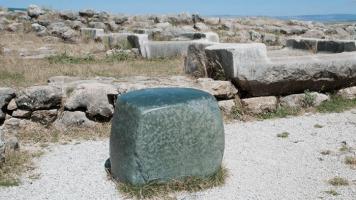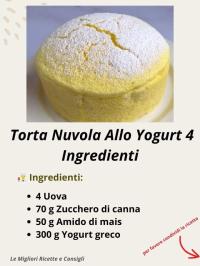Copy Link
Add to Bookmark
Report
Mead Lovers Digest #1223

Subject: Mead Lover's Digest #1223, 22 October 2005
From: mead-request@talisman.com
Mead Lover's Digest #1223 22 October 2005
Forum for Discussion of Mead Making and Consuming
Dick Dunn, Digest Janitor
Contents:
Re: Gluconic acid and sourness ("Dan McFeeley")
Re: Super krausen (Mail Box)
Valhalla-The Meading of Life - Results ("David Houseman")
Re: Mead Lover's Digest #1220, 7 October 2005 (Lofty@aol.com)
NOTE: Digest appears when there is enough material to send one.
Send ONLY articles for the digest to mead@talisman.com.
Use mead-request@talisman.com for [un]subscribe/admin requests.
Digest archives and FAQ are available at www.talisman.com/mead
A searchable archive is available at www.gotmead.com/mead-research/mld
----------------------------------------------------------------------
Subject: Re: Gluconic acid and sourness
From: "Dan McFeeley" <mcfeeley@keynet.net>
Date: Mon, 17 Oct 2005 07:20:31 -0500
On Wed, 12 Oct 2005, in MLD 1222, William wrote:
> . . . About using gluconic acid in meads, if I were to use it,
> I'd put in the mead after the fermentation is complete, as it
> is liable to be fermented away by the yeast. A sample of
> gluconic acid I had ended up by developing an interesting
> fungal growth on it. This tells me that the substance can
> be "digested" by yeasts.
(You might get multiple replies on this :-)
Although it's best to add any acid/s to the mead after the
fermentation is complete, the reason is because of the
potential drop or crash in pH level that could slow or
even stall an active fermentation.
As any former microbiology student who suffered through
learning the steps of the Krebs cycle will tell you, yeasts
don't ingest or digest acid/s, they produce their own organic
acids as metabolic byproducts, which are then secreted into
the micro-environment.
This serves several purposes. There is an adaptive function
served by lowering the pH of the surrounding area. Bacteria
don't function well at pH levels preferred by yeasts, so their
growth will be inhibited. This will allow the yeasts to dominate
the micro-environment (also a good thing for the meadmaker!)
Many chemical reactions are pH dependent, and as a
consequence, the metabolic processes of yeasts are also
affected by the pH of the micro-environment. The secretion
of organic acids by yeasts will help fine tune the micro-climate
to suit them best, along with adding more components to the
flavor profile of the mead (yet another good thing for the
meadmaker!) Bottom line -- don't add acid at the start of
the fermentation! It mucks up the pH that the yeasties are
trying to create for themselves.
Some of the older sources on meadmaking, say about the
1960's or older, may touch on this -- you'll see recomendations
for acid additives, saying that yeasties need an acidic environment.
This is old and dated info -- the late Roger Morse made reference
to a German work on mead by Sarin, published about the 1920's,
that gave that recommendation. Maybe this was the original source.
<><><><><><><><><><>
<><><><><><><><>
Dan McFeeley
"Meon an phobail a thogail trid an chultur"
(The people's spirit is raised through culture)
------------------------------
Subject: Re: Super krausen
From: Mail Box <mail-box@adelphia.net>
Date: Mon, 17 Oct 2005 10:44:05 -0400
From: "david.lane " <david.lane@utahisp.com>
> Date: Wed, 12 Oct 2005 10:05:55 -0600
>
> I've made meads with these yeasts:
[snipped]
>
> I never had what I would really call a krausen,
> only an inch or two of active bubbles. At least
> until the D-47...
>
> Holy smokes. The 3 gallon batch in the 6.5 gallon
> primary kept polluting the three piece airlock!
>
> Now I'm curious if D-47 (fed periodically with DAP
> and yeast hulls) might be the culprit, or is the
> honey itself perhaps to blame, or maybe some celestial
> alignment issues?
>
> Anyway... I like the taste of the mead I've stolen
> from that batch, so I suspect I'll use use D-46 again.
> All in all, Lalvin yeast is just super. Has anyone
> used the Lallemand 43 that seems to be an Eau de Vie
> competitor?
>
> Peace,
> David
David,
That's very interesting, as Lallemand/Lalvin describes D-47 as "a
low-foaming quick fermenter that settles well, forming a compact lees at
the end of fermentation."
Can you share your recipe and fermentation conditions? This may shed
some light on the unusual activity. Regardless of yeast, and I've used
a fairly large number of wine and mead yeasts, and ale yeast in
cider/cysers, I've never had anything even remotely approaching the
krausen I get with a beer. And it looks as though we use some similar
techniques, as I use DAP and yeast nutrient in every batch, and
occasionally yeast hulls. A typical mead krausen for me is under one
inch, and usually well under. I make melomels primarily, but I haven't
noticed any different krausen behavior in a straight mead or a metheglyn.
Cheers,
Ken Taborek
------------------------------
Subject: Valhalla-The Meading of Life - Results
From: "David Houseman" <david.houseman@verizon.net>
Date: Mon, 17 Oct 2005 20:54:59 -0400
The Valhalla - The Meading of Life Mead Only Competition was held on
Saturday, October 15 in the lovely Mt. Pleasant Cafe in Philadelphia. There
were a total of 56 entries from around the country from 31 different mead
makers. Here are the results of this first annual competition:
24 A&B Dry and Semi-sweet Mead (10 entries)
1. Steve Haystead - Montague MI.
2. Lloyd Snyder - White Hall, MD.
3. Christopher Boyd - North Wales, PA
24 C - Sweet Mead ( 8 entries)
1. Bob Grossman - Haddonfield, NJ.
2. Geoffrey McNally - Triverton, PA.
3. Joseph Marrero, Northampton, PA.
25 A & B Cyser and Pyment (10 entries)
1. Ed Walkowski - Dalton, PA
2. Bob Grossman - Haddonfield, NJ
3. Dave Houseman - Chester Springs, PA.
25 C Melomel (11 entries)
1. Ernie Meyer - Philadelphia, PA.
2. George Theall - Philadelphia, PA
3. Bob Grossman - Haddonfield, NJ
26 A Metheglin (9 entries)
1. Bob Grossman - Haddonfield, NJ
2. George Hummel - Philadelphia, PA.
3. Steve Haystead - Montague, MI.
26 A & B Braggot and Other mead (8 entries)
1. George Hummel - Philadelphia, PA.
2. Karl Smith - Ambler, PA.
3. Paul Holm - Holtsville, NY.
Best of Show
1.. Ernie Meyer - Philadelphia, PA. - 25C Melomel
2.. Bob Grossman - Haddonfield, NJ. - 24C Sweet Mead
3.. Ed Walkowski - Dalton, PA - 25A Cyser
Suzanne McMurphy - Organizer
David Houseman - Judge Coordinator
_ _ _ _ _
One correction to the prior results posting for Valhalla mead competition.
Third place for category 24 A&B, Dry and Semi-sweet meads, was award to Ed
Walkowski, Dalton, PA, not Christopher Boyd. We apologize for the error; we
just picked up the wrong version of the typed results file.
------------------------------
Subject: Re: Mead Lover's Digest #1220, 7 October 2005
From: Lofty@aol.com
Date: Wed, 19 Oct 2005 09:12:02 EDT
In a message dated 10/7/2005 11:23:56 AM Eastern Standard Time,
mead-request@talisman.com writes:
In fact, I made a red
raspberry mel that was sweet enough at 1.015 but tasted "thin." I added
acid blend (tartaric, citric and maleic) a bit at a time, tasting as I went,
until it was sufficiently tart to give it a better mouth feel. The residual
honey remained the same.
Cheers, Dione Greywolfe (AKA Dennis Key)
Dear Dennis,
I have done the same with excellent results.
I've also gone straight and it has come out wonderfully.
thanks for the information.
Dr. Jim
------------------------------
End of Mead Lover's Digest #1223
*******************************
























